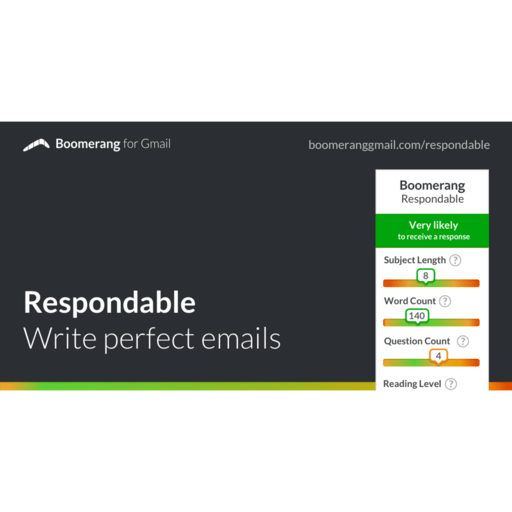

- #BOOMERANG FOR GMAIL REVIEW 2017 PRO#
- #BOOMERANG FOR GMAIL REVIEW 2017 TRIAL#
- #BOOMERANG FOR GMAIL REVIEW 2017 PLUS#
- #BOOMERANG FOR GMAIL REVIEW 2017 FREE#
With paid plans, you don't have to worry about credits and limits because there are none.īasic accounts also come with the following features: send later, Boomerang reminders, response tracking, read receipts, click tracking, and Respondable, which shows a gauge indicating whether you're using strong language choices to write an email that someone would read and respond to.

One message credit lets you use Boomerang on one outgoing message.
#BOOMERANG FOR GMAIL REVIEW 2017 FREE#
With a free account, you get 10 message credits per month. If you choose not to purchase the service after that, you are automatically downgraded to the free Basic account.īasic free accounts work with both Gmail and G Suite (formerly called Google Apps, usually used for business) addresses.
#BOOMERANG FOR GMAIL REVIEW 2017 TRIAL#
With any of the paid plans, you get a free 30-day trial with no credit card required. A team of five, therefore, would pay $200 per month.
#BOOMERANG FOR GMAIL REVIEW 2017 PLUS#
For Premium, groups of three pay $120 per month, plus an additional $40 per person thereafter, again with more discounts for groups larger than 10. The per-person rate goes down the more people you have on your team. A group of six, for example, would pay $60 per month.

For Pro, groups of three or more pay $30 per month, plus $10 per additional person per month up to 10 people.
#BOOMERANG FOR GMAIL REVIEW 2017 PRO#
Teams get a discount for Pro and Premium accounts.
Best Hosted Endpoint Protection and Security Softwareīoomerang for Gmail offers four tiers of service: Basic (free), Personal ($4.99 per month), Pro ($14.99 per month), and Premium ($49.99 per month). Feel free to drop a note, question, or idea in the comments. There are probably other elements of my procedure that I’m not thinking of at the moment or that I intended to share in the talk today but did not. I manage a few other Gmail accounts as well – one for the Johnson Center and one for the Media Studies program This allows me to move files around, post things, and send out messages to folks using those different “voices.” I do not have these forwarded to my main account, as I use them relatively infrequently, but I could very easily do that as well. This means I never have to use an app other than Gmail for my email. I have my AC email forwarded to my gmail, so the two accounts are blended together seamlessly on my end. I use the star function in Gmail (like flagging in Outlook) as a kind of “hold” folder, sloughing off emails that will take a while to deal with OR that I know I’ll need for reference in getting other work done that I can’t do right now. I operate day-to-day on a modified version of Inbox Zero, at least in principle: I shoot to clean out my inbox every time I open it, I do right now everything I can, I tend to write much shorter responses as I showed you, and I’m fairly ruthless about archiving old things.Ī couple of things I also do that aren’t related Inbox Zero but are helpful to me: Speaking of that, I said I’d share with you my own routine, but time and my laptop battery life colluded against it, so it makes sense to share it here. Again, they’re aimed squarely at Gmail, but I do recommend working it into your routine if you can. I also mentioned Boomerang, Better Gmail, and Gmail Meter, so if you’re interested in any of those, by all means, check them out. As always, there’s also plenty more out there that a little googling can help you unearth. If you’re interested in learning more about GTD, Inbox Zero, or the Trusted Trio methods of email management, hit those links where you’ll find some short explanatory videos that lay out each method and their similarities. It’s fairly basic, but if you missed the talk entirely, it can give you some of the main points. Here is the Prezi I used in the first half of the talk. Lots of good questions and comments about what works and what concerns you about using email as a tool for communicating with students (and others). Thanks to those who were able to make it in to the Google Hangout version of my talk today.







 0 kommentar(er)
0 kommentar(er)
